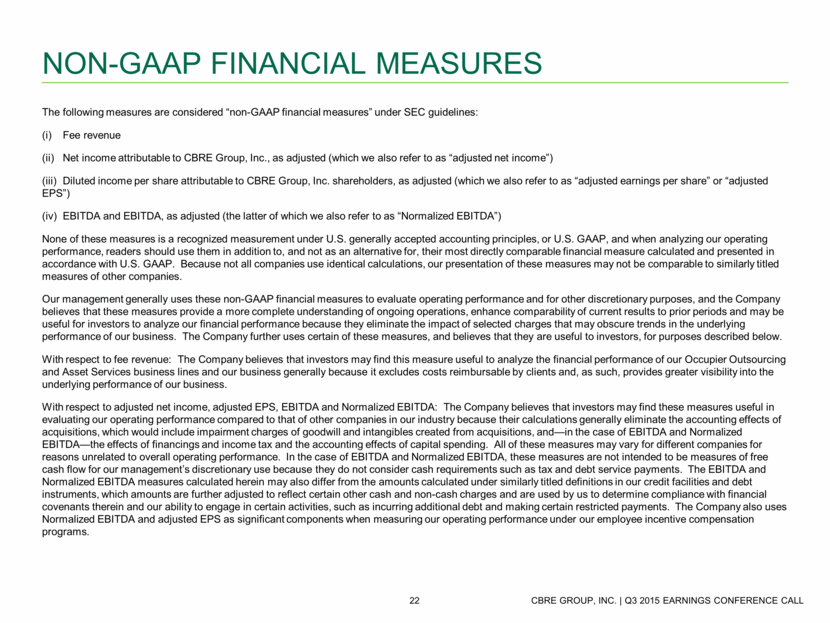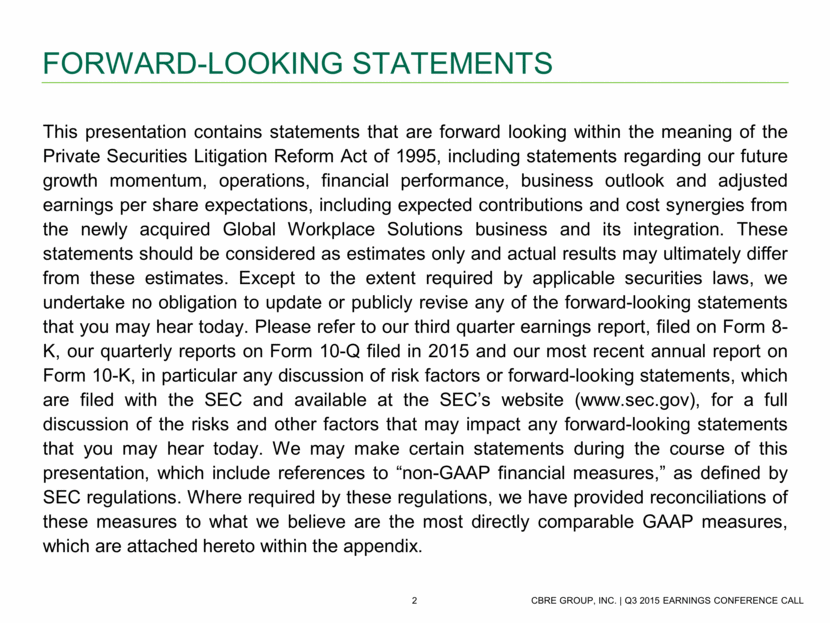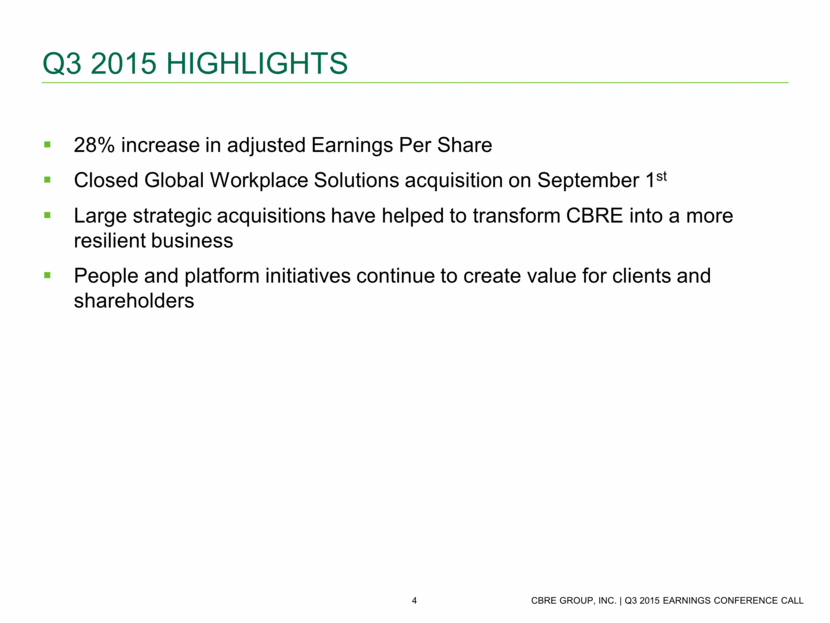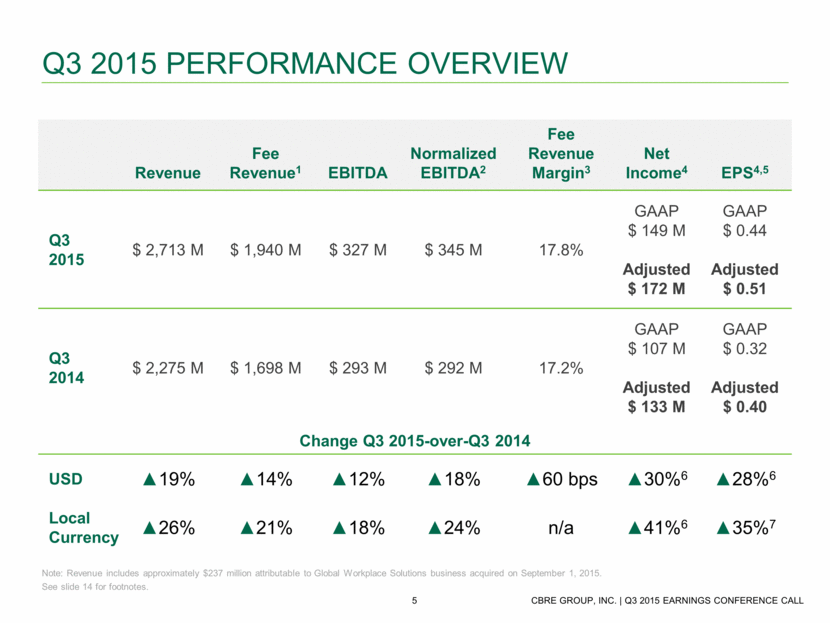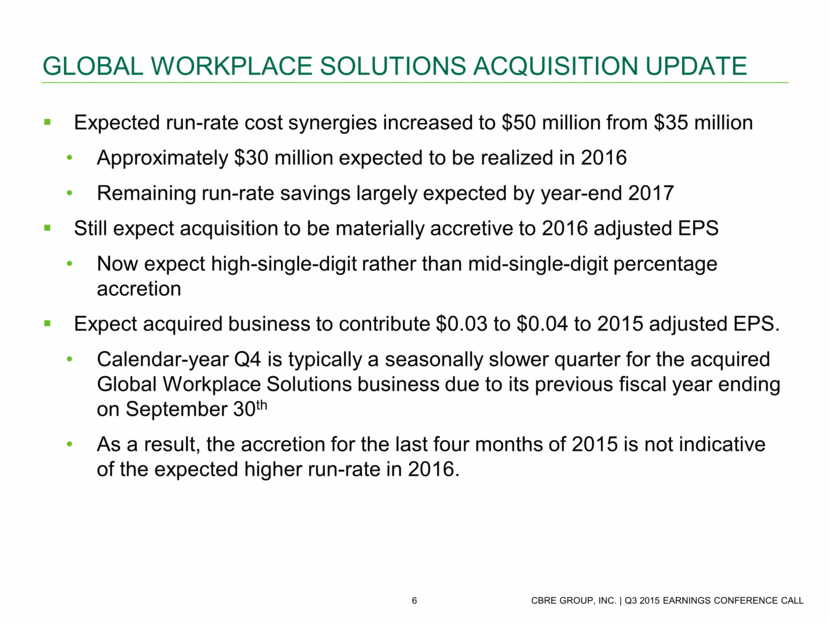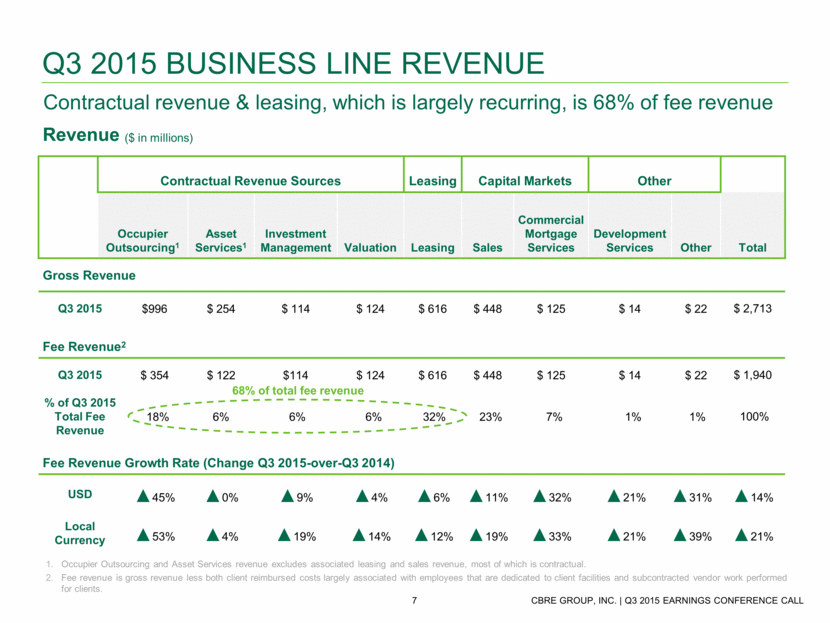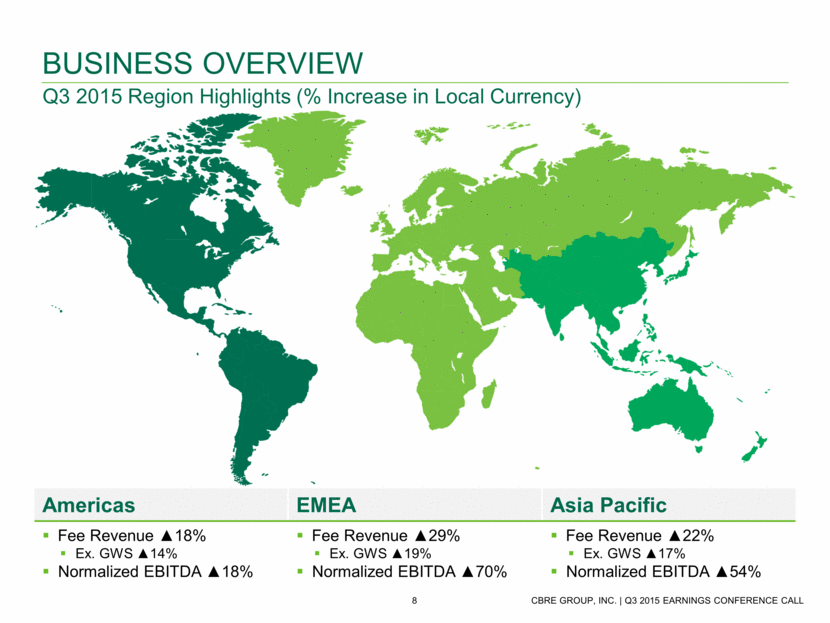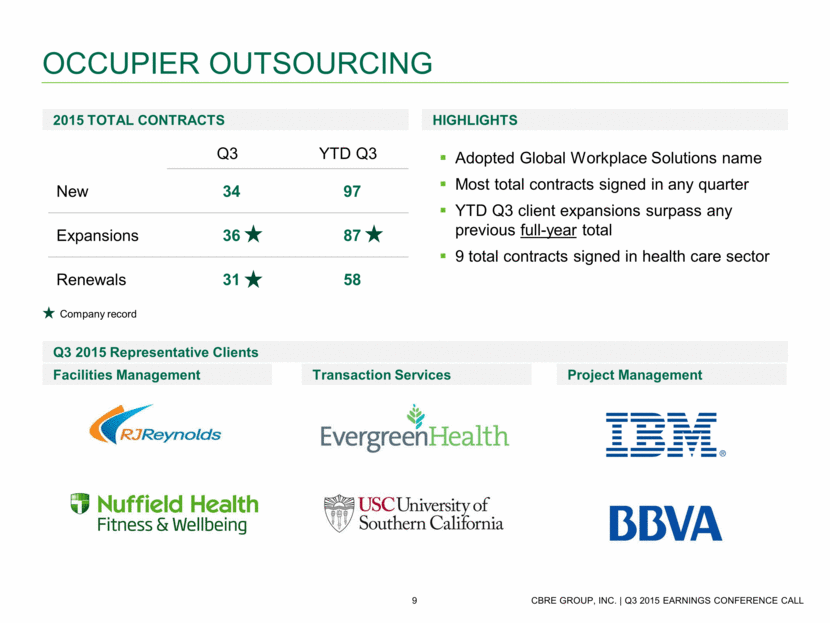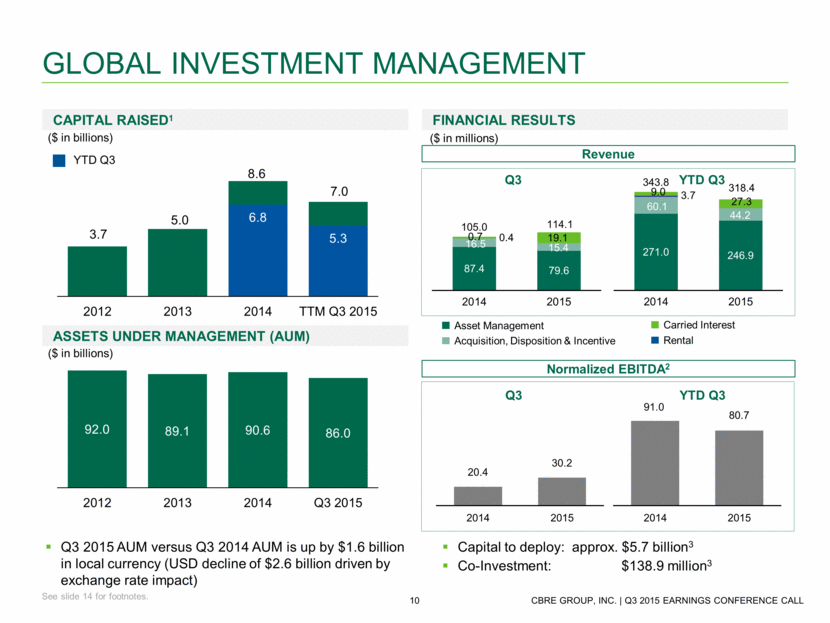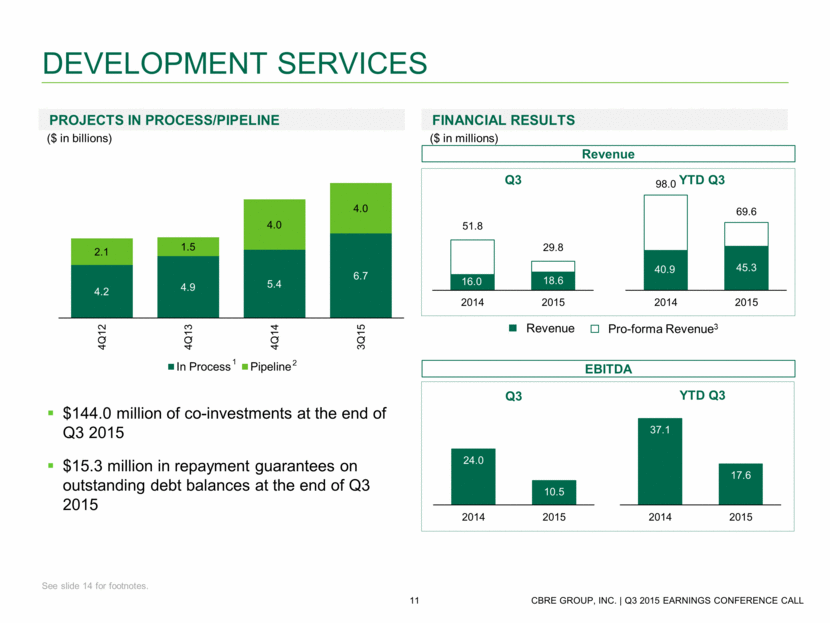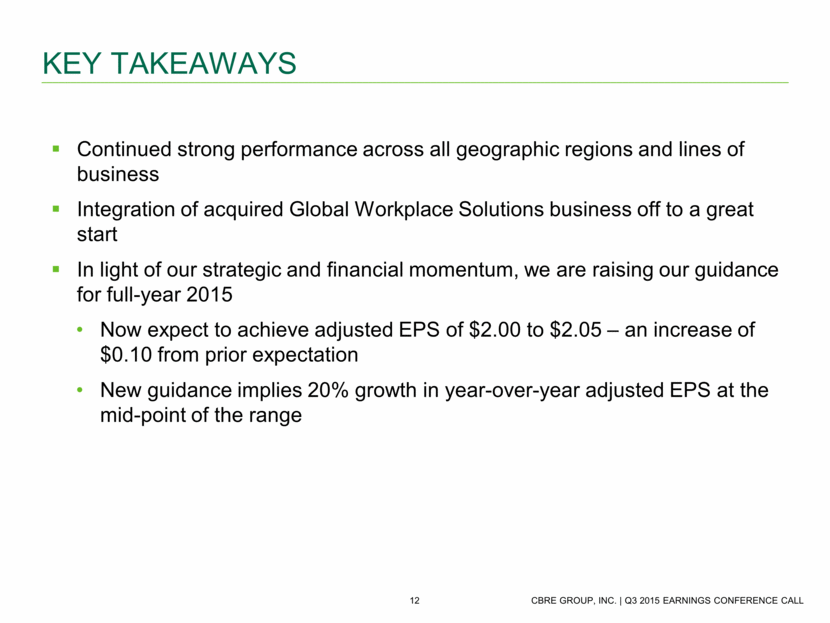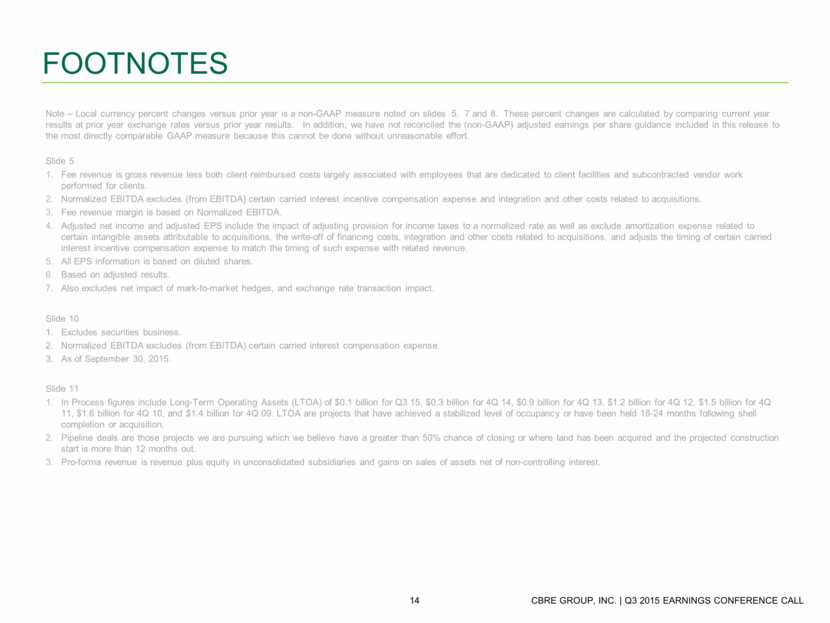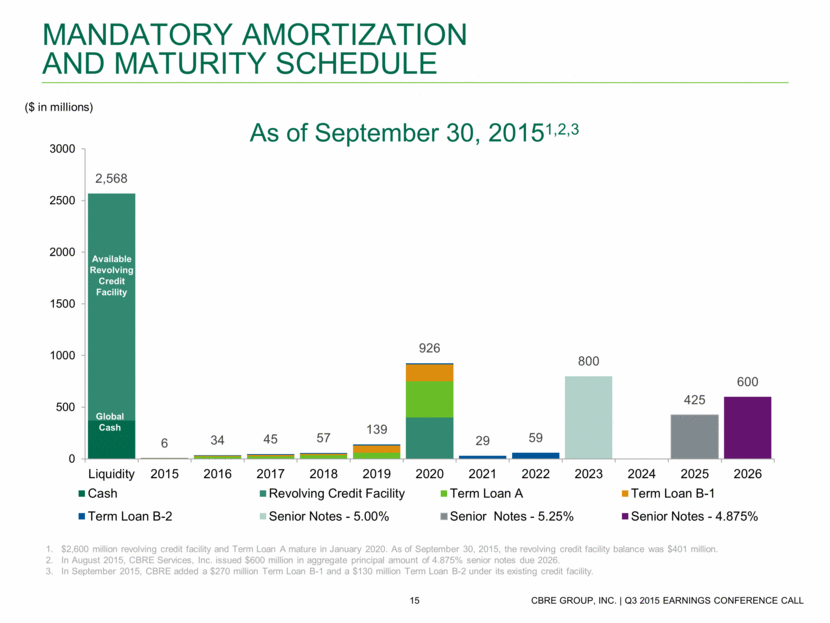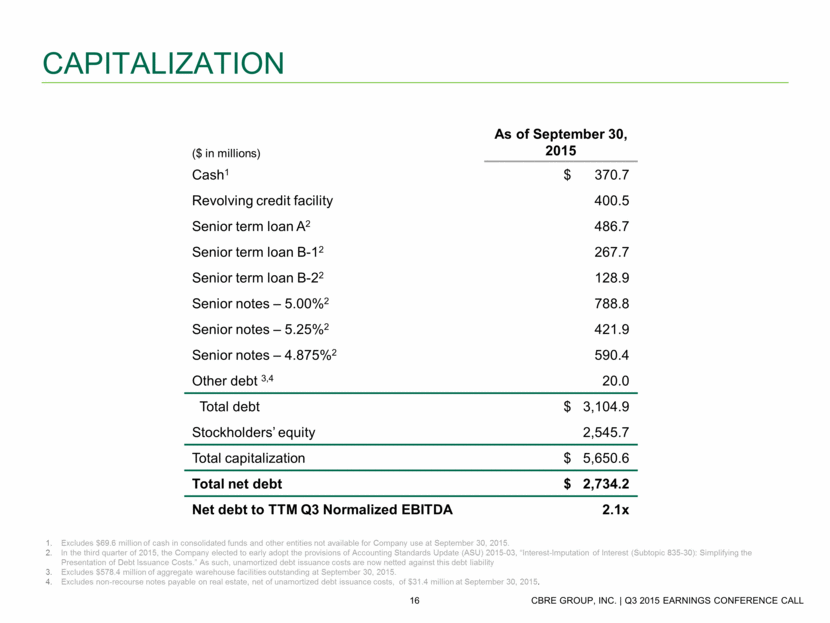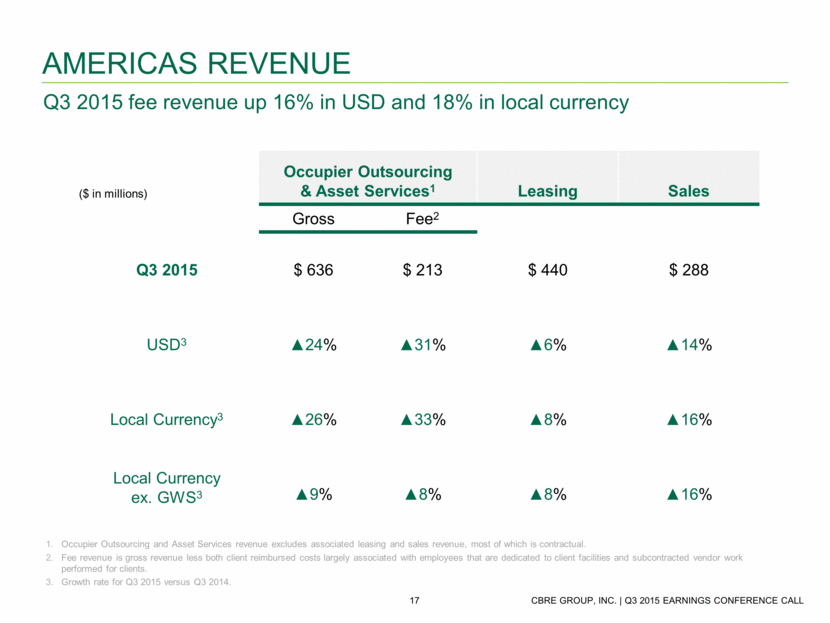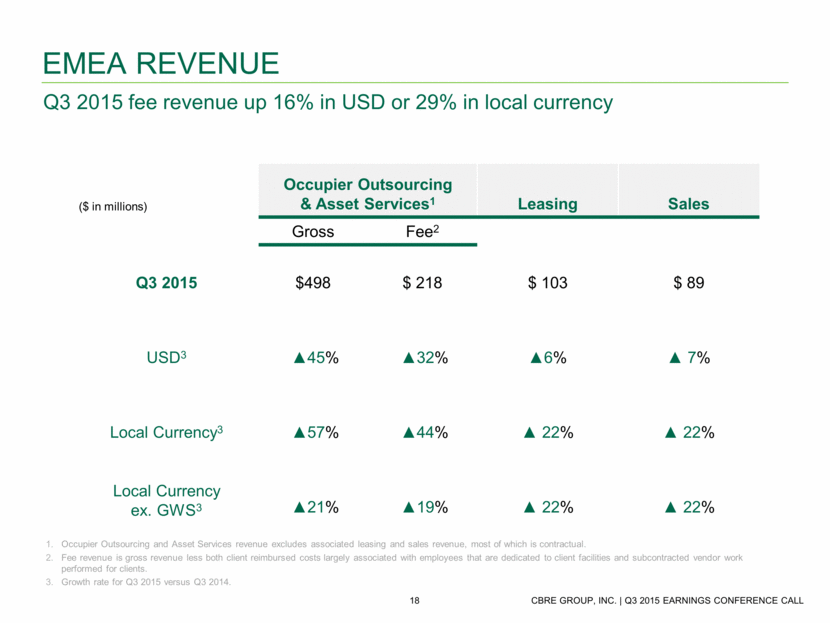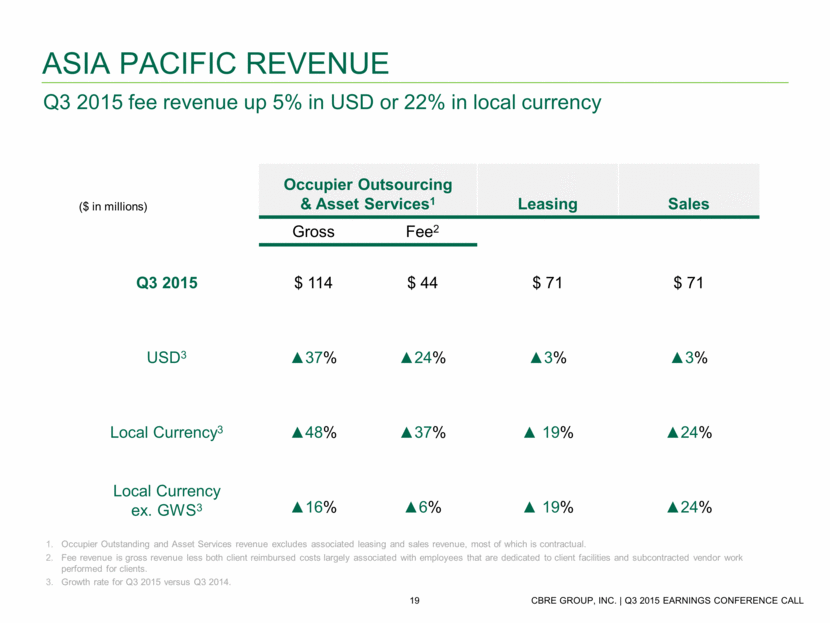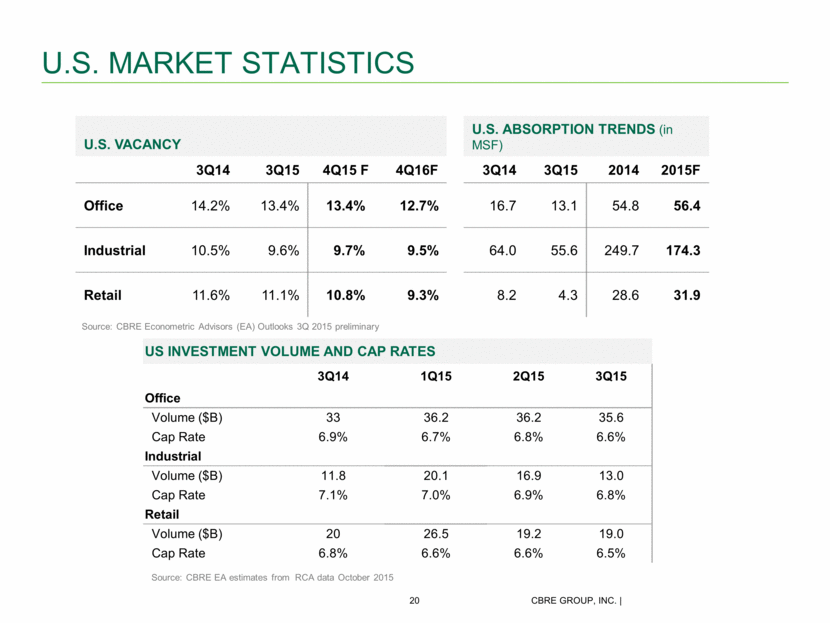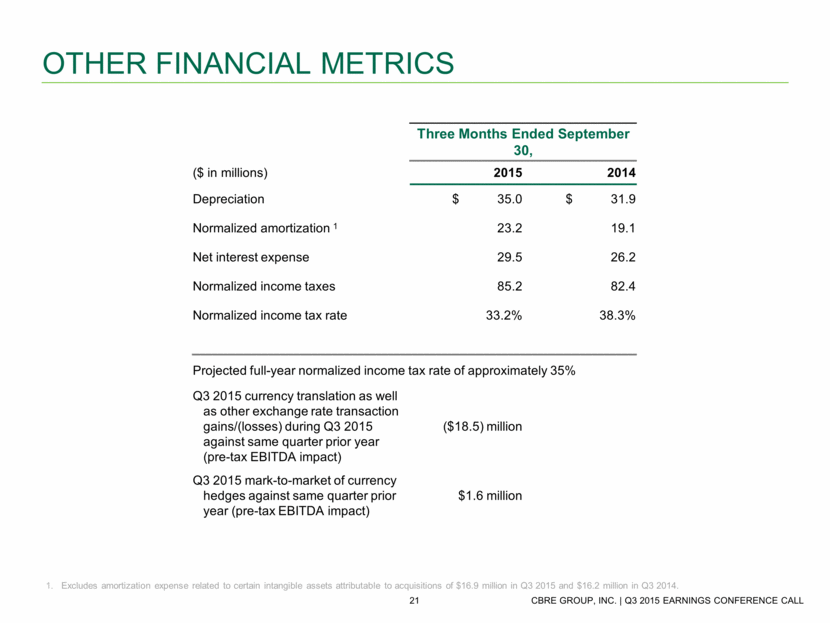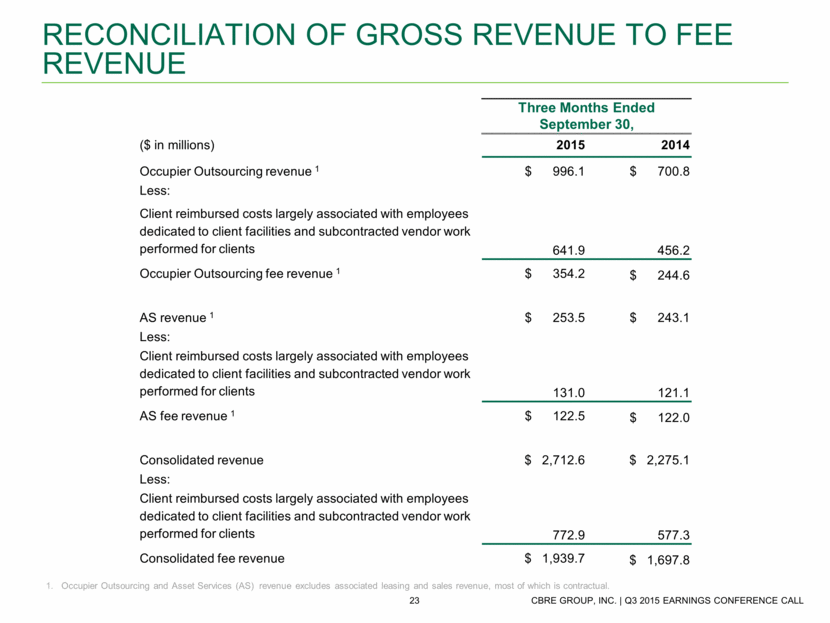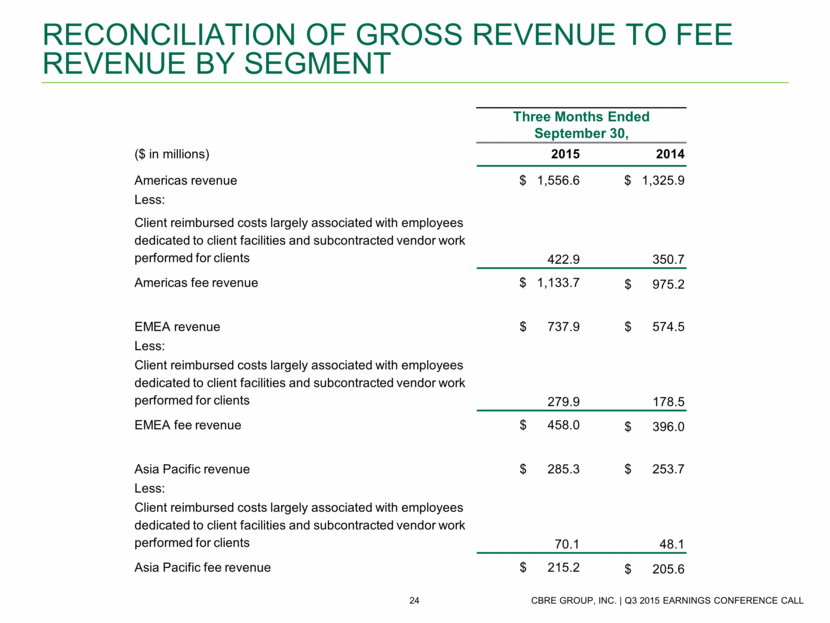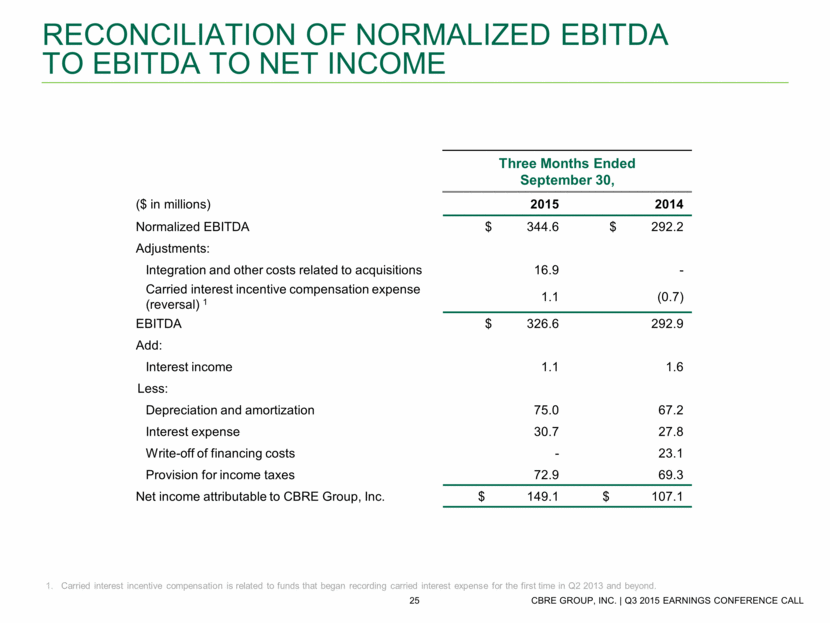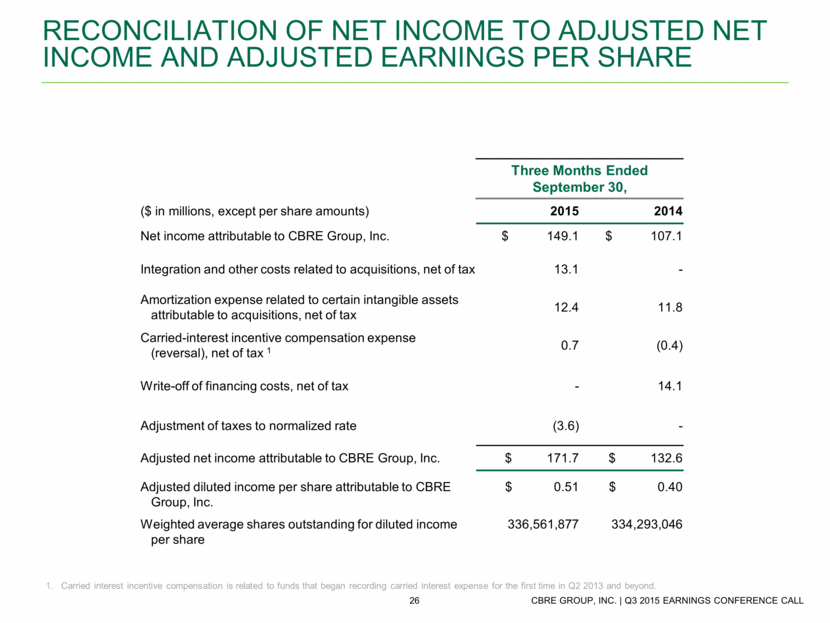Non-Gaap financial measures The following measures are considered “non-GAAP financial measures” under SEC guidelines: (i) Fee revenue (ii) Net income attributable to CBRE Group, Inc., as adjusted (which we also refer to as “adjusted net income”) (iii) Diluted income per share attributable to CBRE Group, Inc. shareholders, as adjusted (which we also refer to as “adjusted earnings per share” or “adjusted EPS”) (iv) EBITDA and EBITDA, as adjusted (the latter of which we also refer to as “Normalized EBITDA”) None of these measures is a recognized measurement under U.S. generally accepted accounting principles, or U.S. GAAP, and when analyzing our operating performance, readers should use them in addition to, and not as an alternative for, their most directly comparable financial measure calculated and presented in accordance with U.S. GAAP. Because not all companies use identical calculations, our presentation of these measures may not be comparable to similarly titled measures of other companies. Our management generally uses these non-GAAP financial measures to evaluate operating performance and for other discretionary purposes, and the Company believes that these measures provide a more complete understanding of ongoing operations, enhance comparability of current results to prior periods and may be useful for investors to analyze our financial performance because they eliminate the impact of selected charges that may obscure trends in the underlying performance of our business. The Company further uses certain of these measures, and believes that they are useful to investors, for purposes described below. With respect to fee revenue: The Company believes that investors may find this measure useful to analyze the financial performance of our Occupier Outsourcing and Asset Services business lines and our business generally because it excludes costs reimbursable by clients and, as such, provides greater visibility into the underlying performance of our business. With respect to adjusted net income, adjusted EPS, EBITDA and Normalized EBITDA: The Company believes that investors may find these measures useful in evaluating our operating performance compared to that of other companies in our industry because their calculations generally eliminate the accounting effects of acquisitions, which would include impairment charges of goodwill and intangibles created from acquisitions, and—in the case of EBITDA and Normalized EBITDA—the effects of financings and income tax and the accounting effects of capital spending. All of these measures may vary for different companies for reasons unrelated to overall operating performance. In the case of EBITDA and Normalized EBITDA, these measures are not intended to be measures of free cash flow for our management’s discretionary use because they do not consider cash requirements such as tax and debt service payments. The EBITDA and Normalized EBITDA measures calculated herein may also differ from the amounts calculated under similarly titled definitions in our credit facilities and debt instruments, which amounts are further adjusted to reflect certain other cash and non-cash charges and are used by us to determine compliance with financial covenants therein and our ability to engage in certain activities, such as incurring additional debt and making certain restricted payments. The Company also uses Normalized EBITDA and adjusted EPS as significant components when measuring our operating performance under our employee incentive compensation programs.
